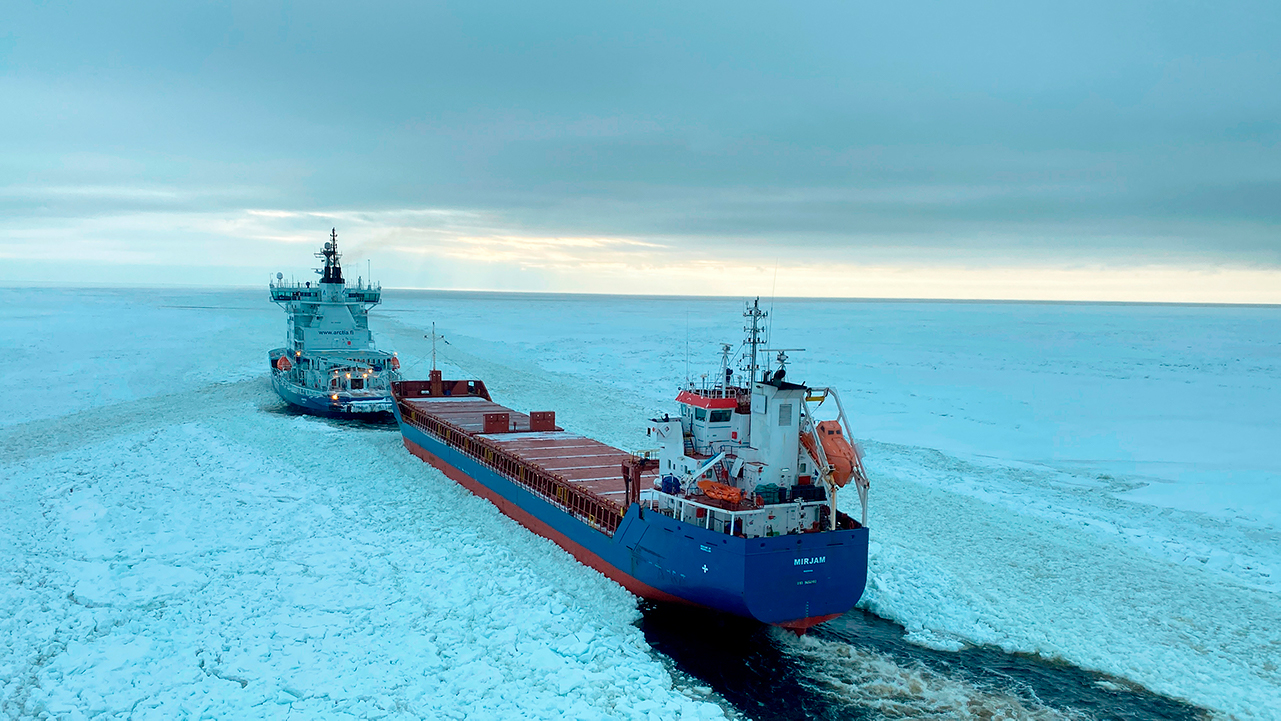 While spring has started to arrive in Southern Finland, vessels will still be assisted in sea areas, says Finnish Transport Infrastructure Agency. Chief Maritime Specialist Jarkko Toivola shares his views on the subject.
While spring has started to arrive in Southern Finland, vessels will still be assisted in sea areas, says Finnish Transport Infrastructure Agency. Chief Maritime Specialist Jarkko Toivola shares his views on the subject.
"This winter has been average. It’s been so cold in both the Gulf of Finland and the Bay of Bothnia that a large amount of ice has formed in the sea. In addition, winds have partly blown from exceptional directions, which has meant that the ice has moved a lot. All this has caused an increased need for assistance. With one exception, all of Finland's icebreakers have been in use this winter. However, there were quite few rough storms, which means there has been no need to interrupt traffic more than once.
The winter is also not yet over. There’s still plenty of ice in the Bay of Bothnia, and merchant vessels still need assistance there far into the spring.
No two years are the same, so it’s impossible to predict the conditions for a coming winter on the basis of the previous one. For example, last autumn we had no storms that mixed the waters and froze them, so it took longer to form ice. On the other hand, the period after the turn of the year when temperatures were below freezing increased the ice mass rapidly in both the Bay of Bothnia and the Gulf of Finland.
Winds can only be forecast three days in advance, and freezing temperatures about five days in advance, so decisions concerning the launch of icebreakers are made quickly. It can be said that preparedness is long-term, but the response is an online activity. We need to be ready at all times and, on the other hand, we need to allocate icebreaking capacity for years to come. Icebreakers and icebreaking are an essential element in securing commercial shipping in winter.
We currently have interesting development work underway with Aalto University. We are further refining the operational simulation of winter navigation developed in the EU-funded WINMOS project. We will use the simulation and based on reliable data, we will aim to model how the navigation of merchant vessels which do not travel well in icy conditions can be secured, in view of the development of maritime transport and, in particular, the increasing environmental requirements of maritime transport and what type of icebreaking capacity we will need in the future. The purpose of the study is to ensure the functionality and cost-effectiveness of Finnish maritime logistics and to minimise total emissions from shipping.
In addition to research, we have started a joint icebreaker planning project between Finland and Sweden. We will get the first cost estimates for the various options within a month’s time. The ageing icebreaker fleet in both countries demands renewal, but possible procurement decisions are made after planning and funding decisions.
The motorised detachable bow developed for icebreaking in Saimaa Canal is very effective. When we openedd the Saimaa Canal, we measured the performance of the bow in ice. We have strong confidence in for our detachable bow, as our experience thus far of icebreaking in the early winter were good.“



